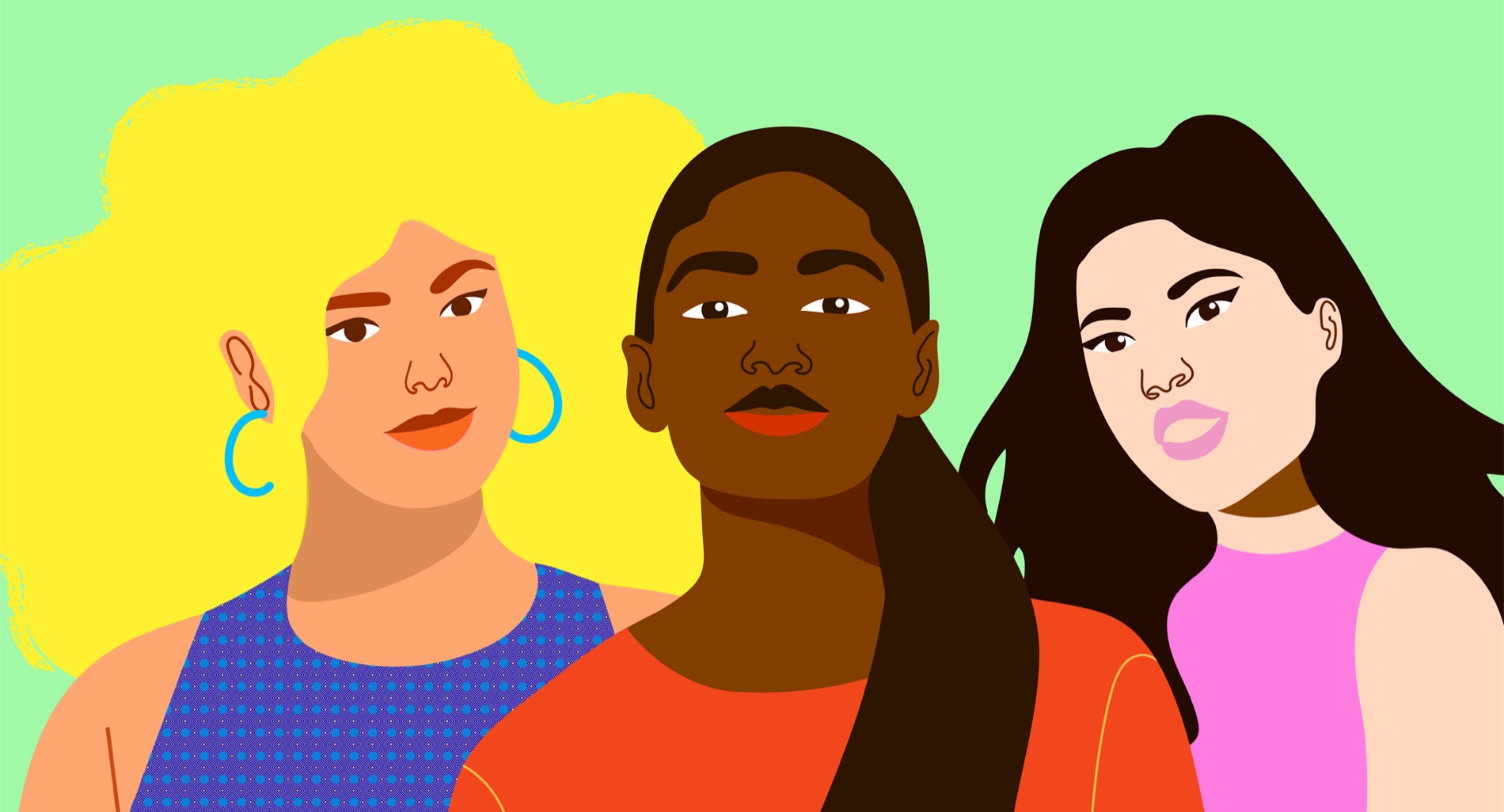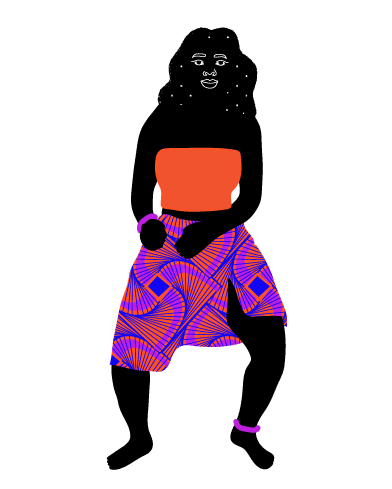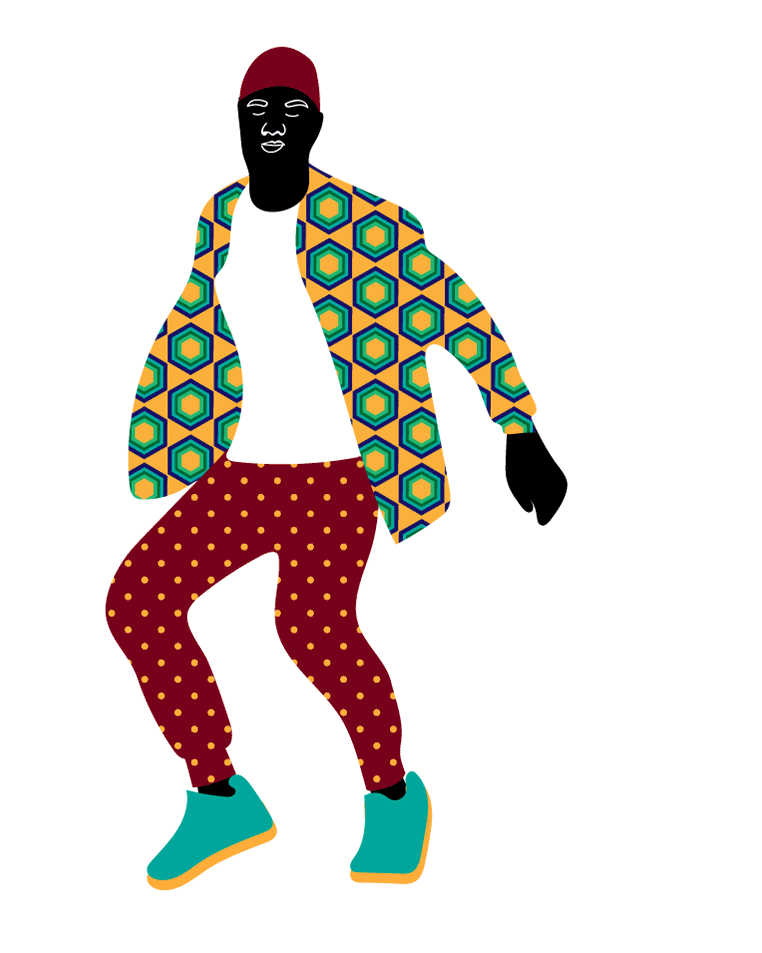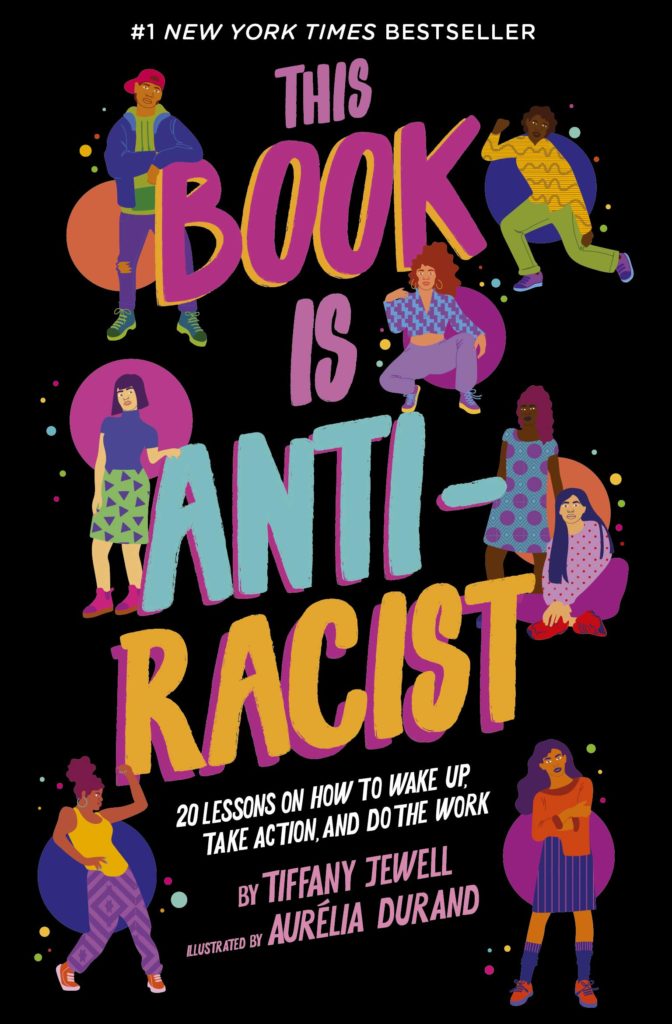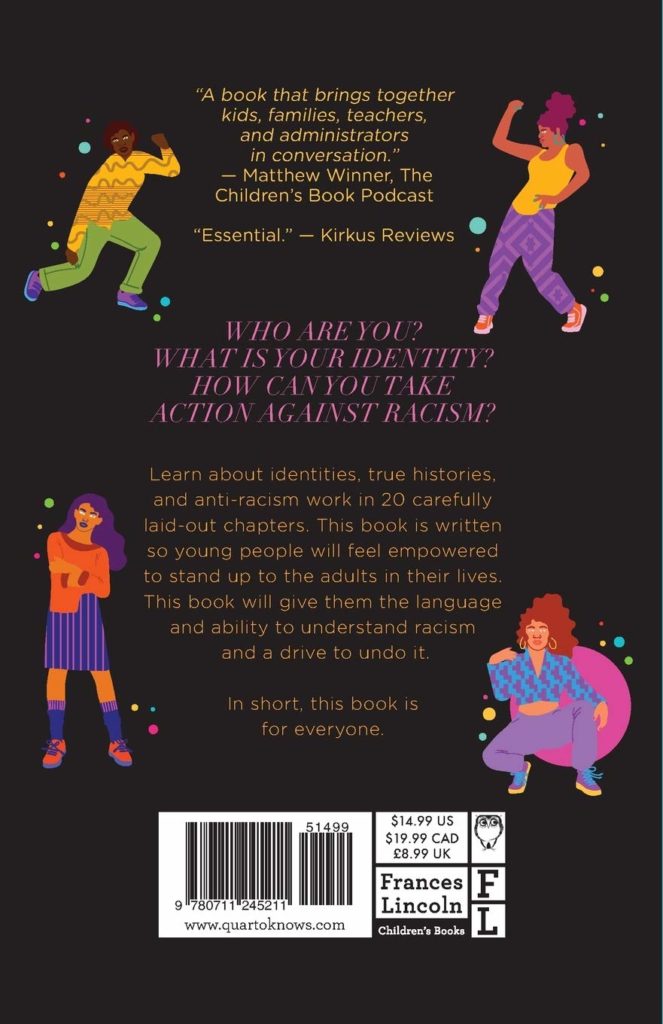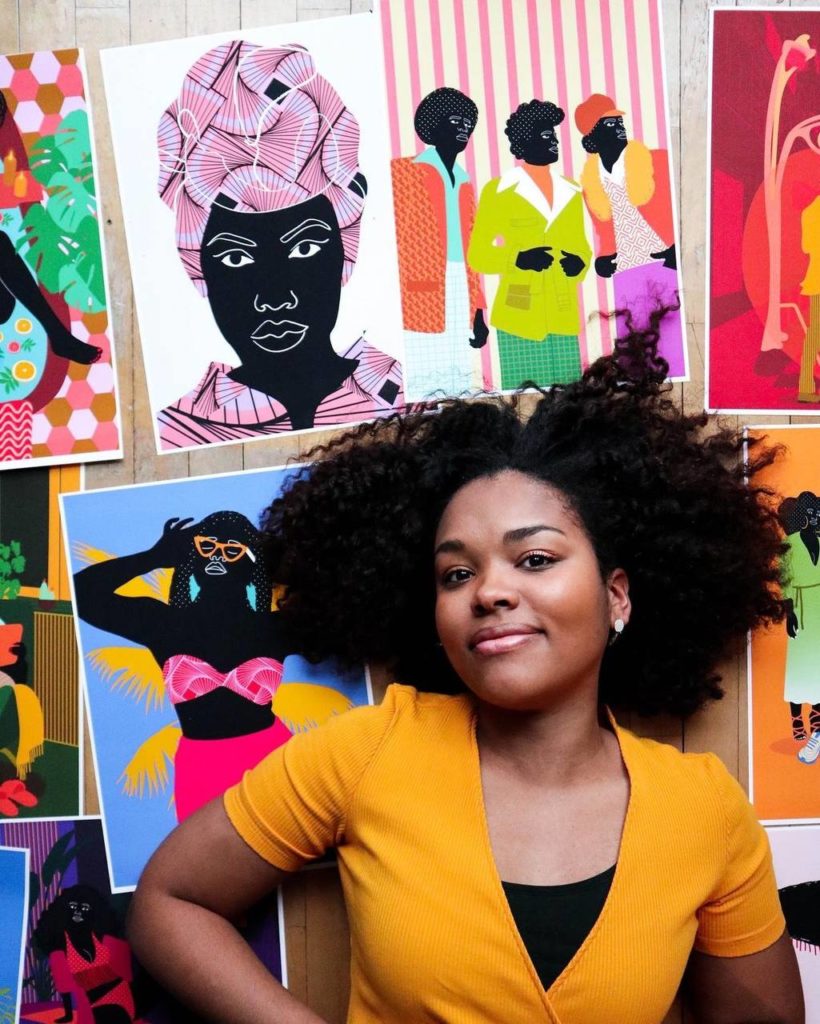
Currently based in Copenhagen, Aurélia represents the unified voice of a global community whose hopes, dreams and aspirations envision an inclusive future for all. Her work includes illustrations, animations, augmented reality, paintings, and murals. Working for international brands such as Apple, Instagram, and Adobe, Aurélia also illustrated the best-selling book This Book Is Anti-Racist, written by Tiffany Jewell.
Following the success of the book and looking forward to the release of the next one, “This Book Is Feminist”, we spoke with Aurélia to learn more about her career, the redescovery of her West African heritage through art, and the importance of minority representation.
Aurélia will share her knowledge and experience at Design Matters 21, which will be held in Copenhagen and online on September 29–30, 2021.

Where does the choice of using of vibrant colors in your work come from? What themes do you want to portrait and present to the public?
The bright, vibrant colors I use represent every spectrum you can find in society. We are all humans: we all have desires, we all want to be included and feel we belong somewhere. Using color is also a way for me to catch people’s eyes and draw attention to topics that are not being discussed enough in our societies.

Some people describe my art as beautiful. When I hear this I think, “ok, but if you truly want to enjoy what I do, you also have to understand more of what it means”. People should be more aware of black history. Even if we didn’t exist during the colonisation and slavery period, we must know about that time in history. Only by being aware, we can change the course of today’s events. Just as we like to remember WW1 and WW2 not to make them happen again, we should remember black history.
My work doesn’t exclusively portray black people, though. It portrays people of all ages and ethnicities, women, men and everything in between. I love to illustrate diverse people, including people of all gender identities and sexual orientations, because I think they matter too.
In your work dancing seems to play an important role. Is that so?
Dancing represents a way to connect with my mother’s culture; dancing is an important part of her culture. When I was younger, my mum would always put on African music at home. More in general, dancing is an immediate and universal way to connect with others. Even if it varies from country to country, everyone can relate to it; it has such a strong focus on the community. To me, illustrating dancing people is portraying empowered people. Dancing can also be a joyful and peaceful way to protest.
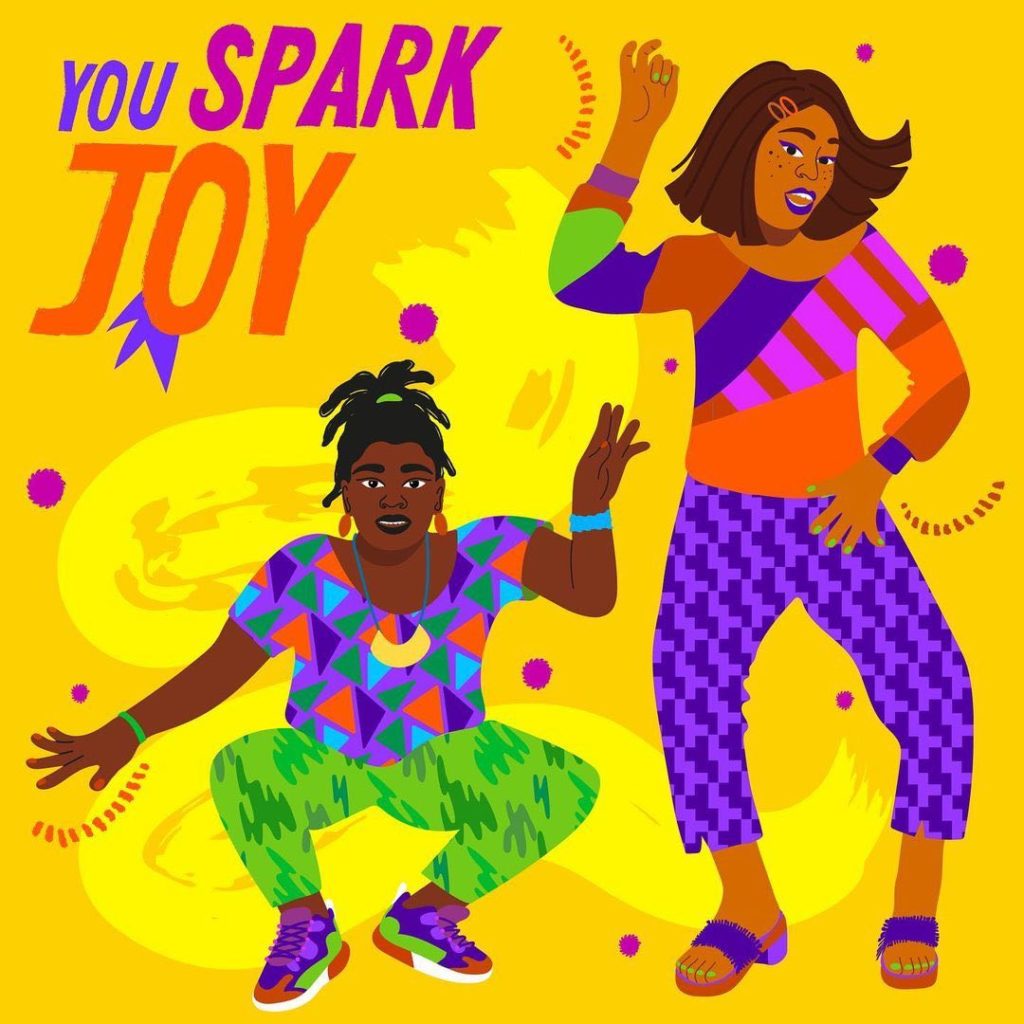
How and when did you start exploring your mixed identity through art?
I was 18, and I was presenting my work during an exam at Art School. The professor asked me “who are you?”. By asking me that question, he was preparing me for the ‘outside world’, where people want to know what kind of thinking goes behind an artwork. That question also made me start to think about my identity.
I looked at my parents’ house and noticed so many things from the Ivory Coast — where my mum is from. My father is white and French, and my mom is black and Ivorian. People see me as a black person, but I always lived in France. I only know French and English, and I’ve been raised as a French person. I never lived in the Ivory Coast, and my mum never really told me much about Africa. I’m obviously an Afro-descendent, but I know very little about that side of me.
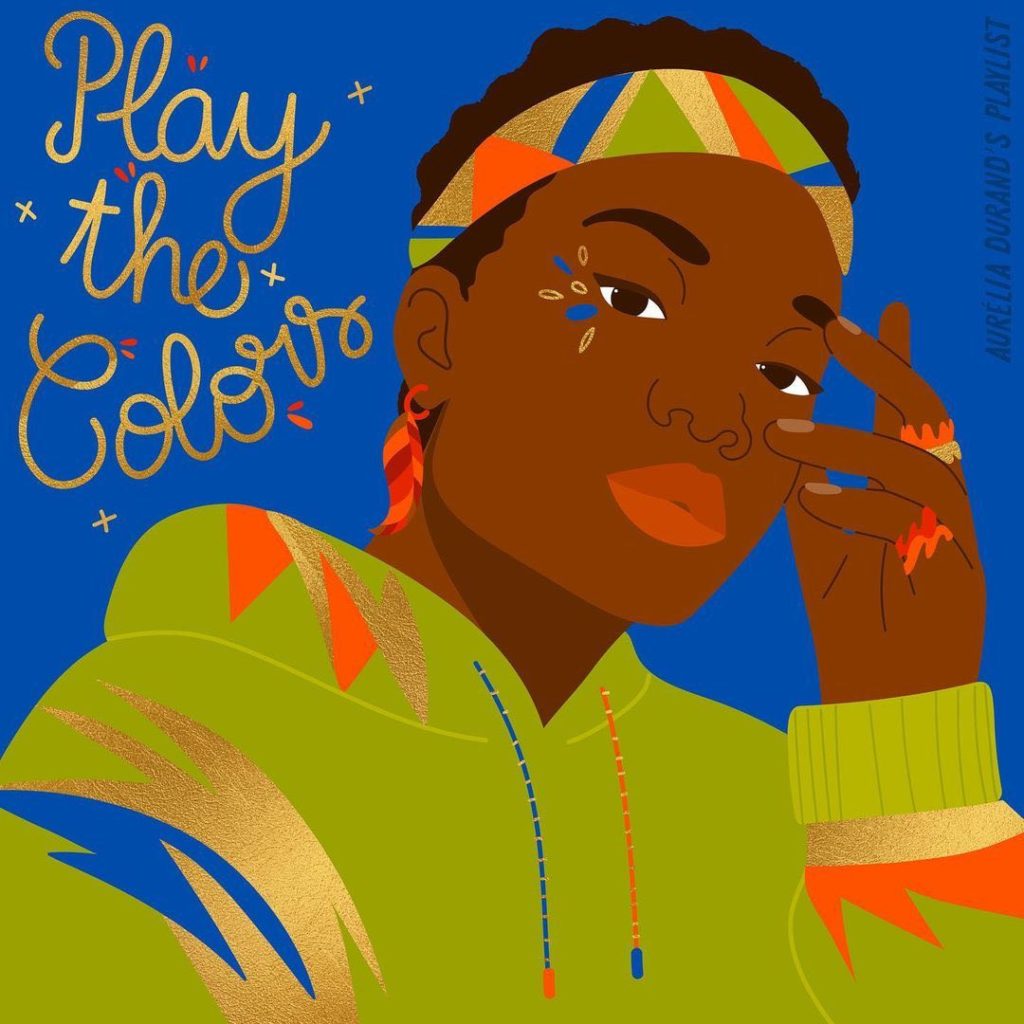
Did you encounter any difficulties during your time as an art student? How has that affected your life?
Art school didn’t have the same diversity that there was in society; my teachers were white old men. As a black person, you struggle to find your place in an environment like that; you often have to keep justifying yourself and your choices, and eventually you become more confrontation-avoidant.
However, during those six years I learned so much; I did photography, sculpture drawing, idea development, and also travelled, experiencing new things. I came to Denmark for the first time as an Erasmus exchange student. I wanted to study Scandinvian design more in depth, but I also wanted to challenge myself by living in a different country.
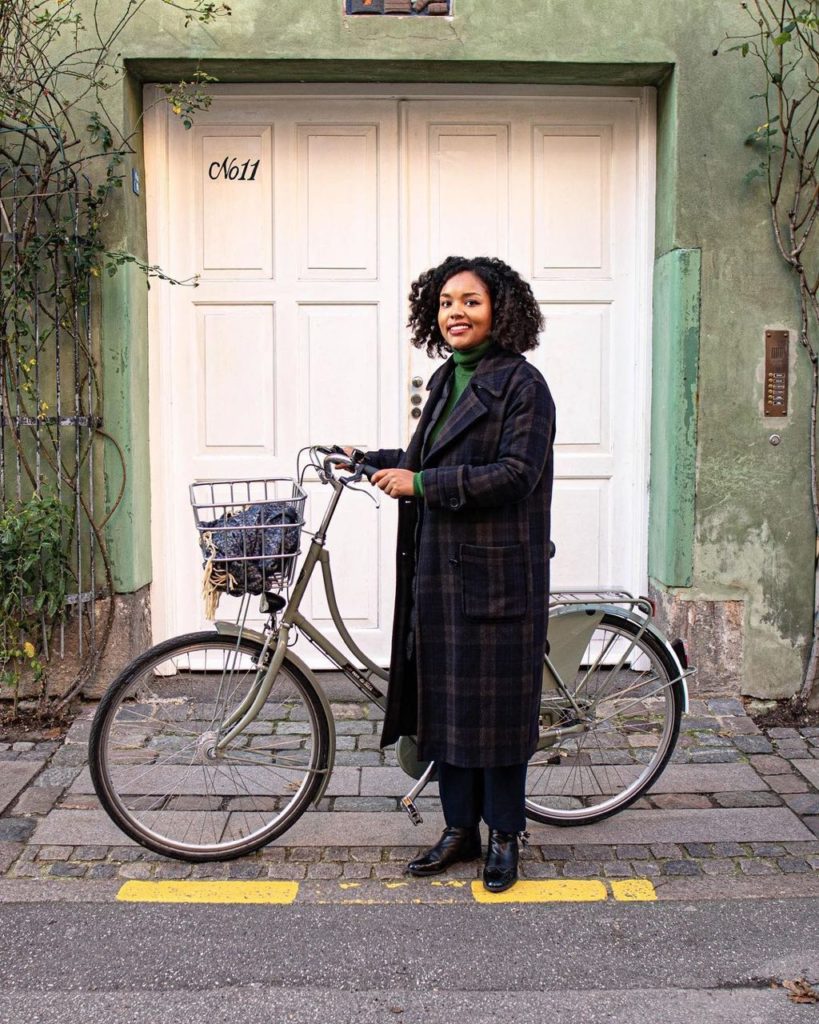
You have lived in Denmark for a while now. How has living in Denmark, a country with little diversity, impacted yourself and your career?
When I moved here I was shocked by how homogenous Denmark is. Everybody wears the same clothes, everybody has the same things at home. Perhaps it has to do with the welfare system that makes everyone able to afford the same things. There is more equality, but the downside is that everybody becomes the same, in a way. This is actually one of the reasons why I started to do what I do. Perhaps, if I hadn’t moved to Denmark, I wouldn’t have started my work. There is a sort of contrast in me; I love the simple, minimalistic design of Scandinavia, but at the same time, it’s not who I am. I need to be myself. Winters are very long and dark here, I need to have colors and connect with people that feel the same way as me.
Danes are very good at concept development and doing business, and this has surely inspired me to become an entrepreneur. I used to think I couldn’t make a living out of being an illustrator, so in the beginning I was looking for product designer jobs. With my business partner I built a startup producing a mobile bicycle parking; it was used at Roskilde Festival and other events like Distortion three times, but the business didn’t take off.
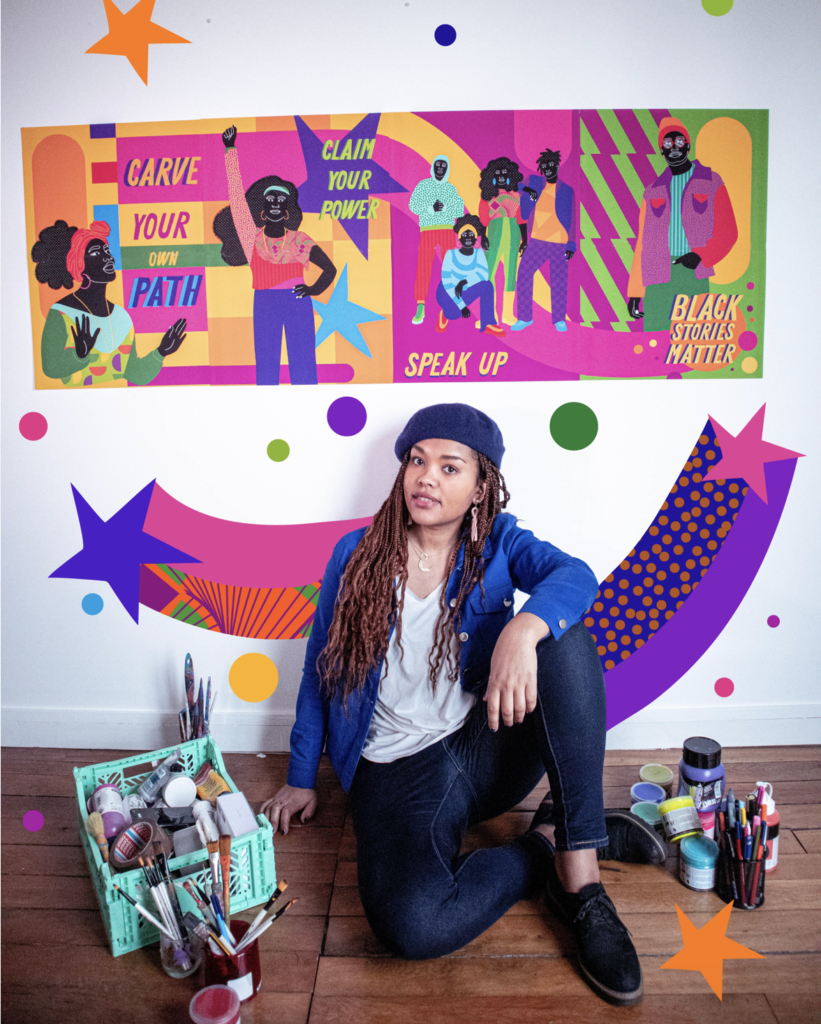
This failure taught me a lot on how to handle a business. So, I started drawing and sharing my work online. My Instagram page gained a lot of followers, leading me to jobs as an illustrator. At the same time, I started attending events in Copenhagen where Danish and international people would share their experience on what it is like to be a person of color in Europe or in the US. However, I felt that something was missing; the black community is so small in Copenhagen, and I was hoping to find a bigger one moving back to Paris. But I didn’t find what I was looking for there either. In countries like France or Denmark there isn’t as much awareness of the BLM movement as in English speaking countries. This is why my work is international and predominantly in English. I’m currently working for big and influential companies like Nike, Google, Apple, Facebook, which allow my work to impact people across the whole globe.
What issues do you see in our society? How do you contribute with your work to make a difference?
In France, Denmark, and many other countries only few are talking about BLM, xenophobia and racial oppression. People often don’t realise they’re being racist when they say or do something. The reason behind this is often connected to education and institutions. Structural racism can affect our actions, the way we speak, and what we say. But every word we say matters. “This book Is Anti-Racist”, written by Tiffany Jewell and illustrated by me, shows many examples of racist language and phrases that have been present in our culture for years.
We need to start to talk more openly about these matters, because, many times, when these topics are brought up, people get offended. We need to educate kids, but we also need to educate ourselves. That’s why this book was created to be understood by people of all ages. Black people and of other minority groups are also underrepresented and misrepresented in the media. We constantly have to prove ourselves more than anyone else. We just want our lives to matter as anyone else’s and have as many chances as anybody else. So, through my work, I try to bring joy, raise awareness, and make these matters easier to understand.
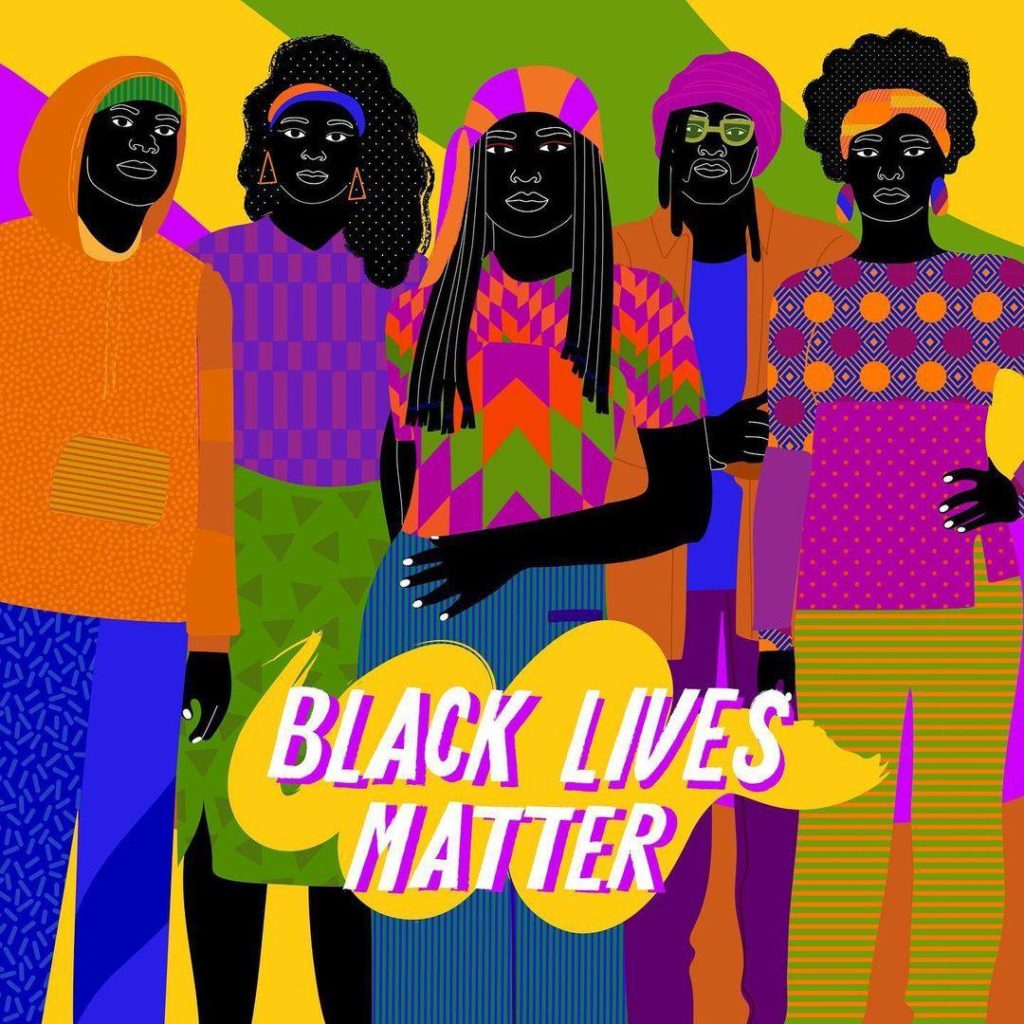
What piece of advice would you give to artists with a multicultural background, or from a minority group, who hope to follow your footsteps?
There are many black people who think their kids will never succeed in the art industry because “it’s not worth anything”. In reality, if they have the talent, they can succeed and make a career out of it. Black and other minority artists can bring new perspectives.
You might not become the best known artist, but you will still have an important role in leading change. Your story is unique, and luckily today people want to hear more personal stories. You obviously need to be talented, but you also need to excel at communicating and being your own entrepreneur. Get out of your comfort zone, put your work out there, and communicate it! I started by showing my work on Instagram.
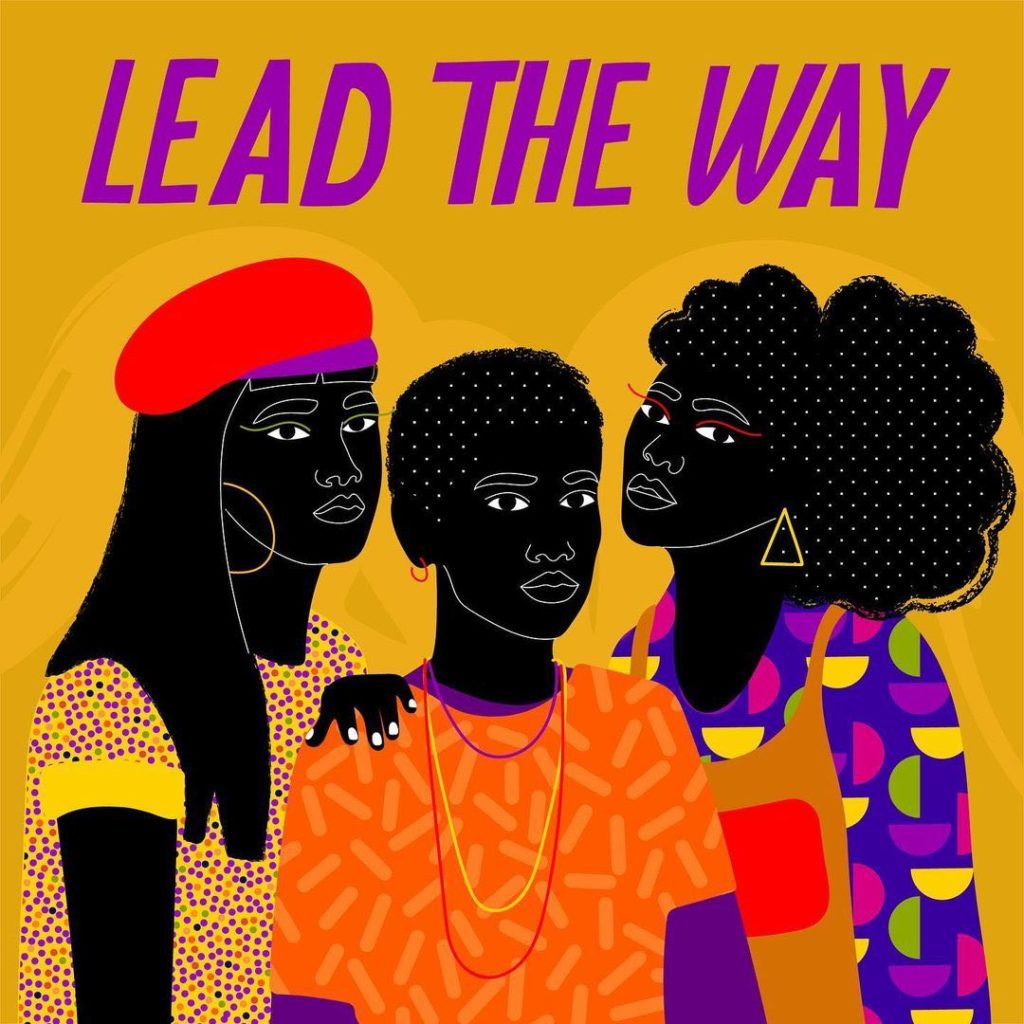
It’s surely important to find your voice and the right space for your work online. In regards to social media, it’s been shown that an algorithmic bias makes it harder to find more diverse content. How can we overcome this?
We can challenge our thinking by following someone who is different from us. Of course social media can be dangerous — people can steal ideas or spread fake news and brainwash people. But so many good things have happened thanks to Instagram and other digital platforms. The BLM movement is an example. Many causes are tackled through social media, and it’s beautiful. Social media is a great education tool and has also created many jobs, like mine.



